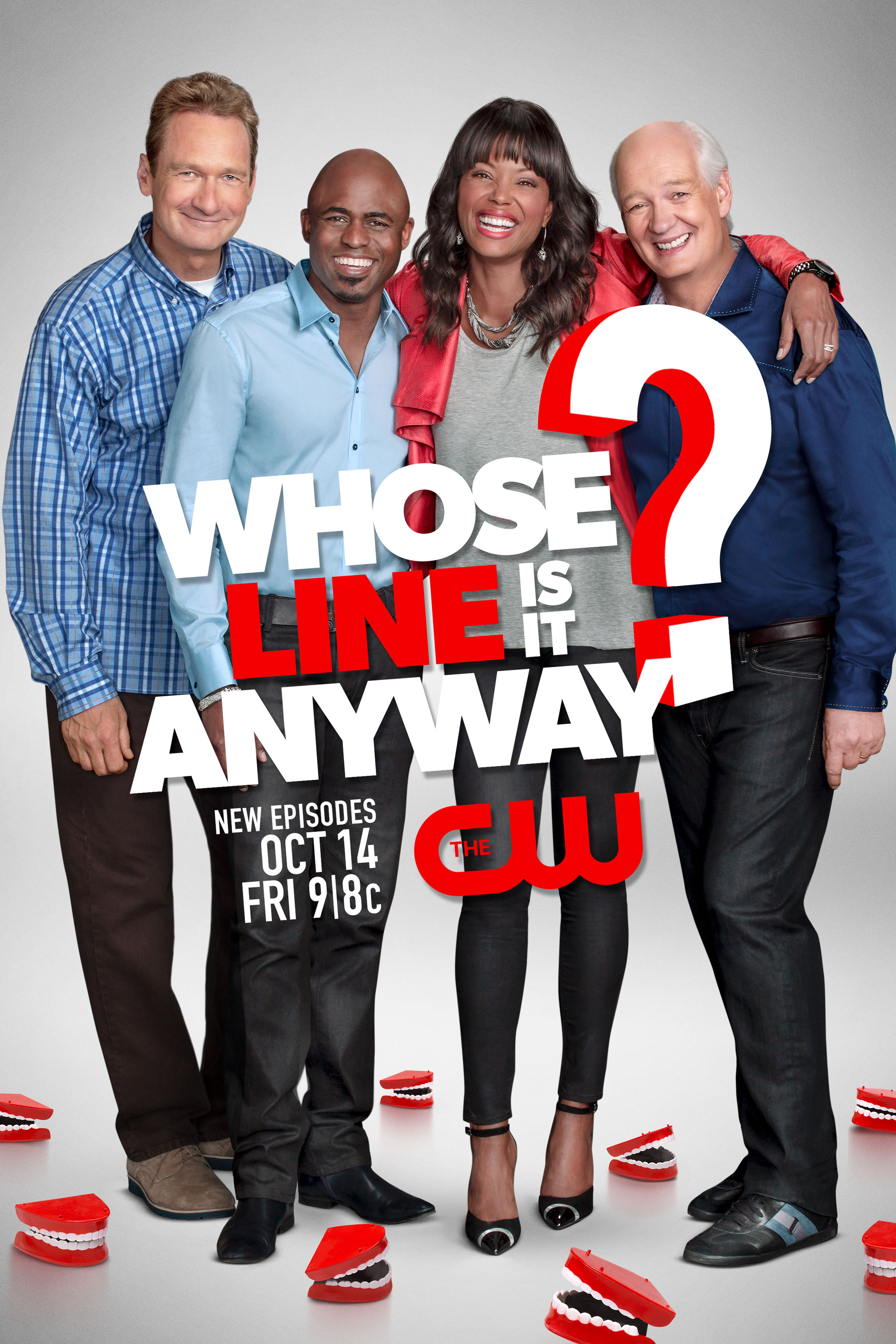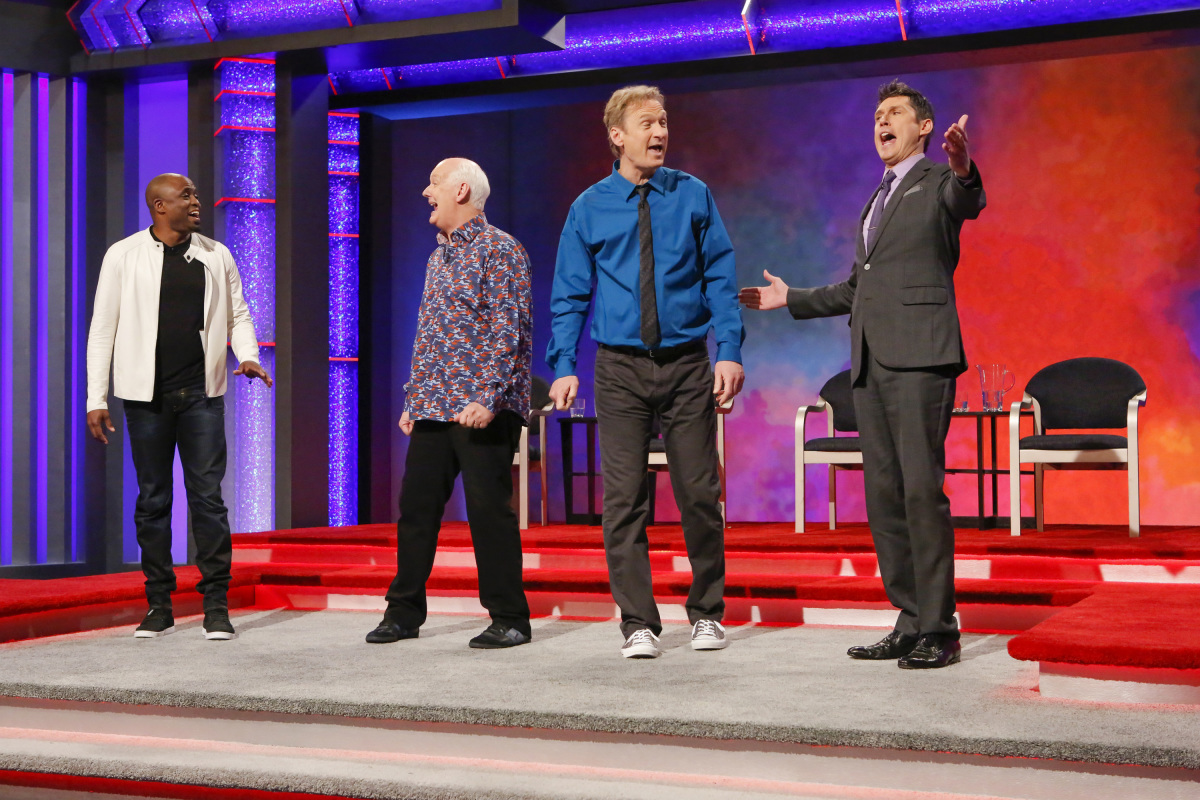Whose Line Is It Anyway?: A Hilarious Historical past of Improv’s Reign
Associated Articles: Whose Line Is It Anyway?: A Hilarious Historical past of Improv’s Reign
Introduction
On this auspicious event, we’re delighted to delve into the intriguing matter associated to Whose Line Is It Anyway?: A Hilarious Historical past of Improv’s Reign. Let’s weave attention-grabbing data and supply recent views to the readers.
Desk of Content material
Whose Line Is It Anyway?: A Hilarious Historical past of Improv’s Reign

Whose Line Is It Anyway? is not only a present; it is a cultural phenomenon. For many years, its mix of fast wit, spontaneous creativity, and sheer comedic brilliance has captivated audiences worldwide. Greater than only a showcase of improv expertise, it’s a testomony to the ability of playful collaboration and the sudden joys of letting go. This text delves into the historical past, legacy, and enduring attraction of this beloved improv comedy collection.
The unique British model, which aired from 1988 to 1998, laid the groundwork for the present’s world success. Created by Dan Patterson and Mark Leveson, it launched the careers of comedic giants like Clive Anderson, Josie Lawrence, Stephen Fry, Paul Merton, and the inimitable Ryan Stiles. The format was easy, but revolutionary: a panel of improvisers tackled video games and situations urged by the host, with the only real constraint being their very own imaginations. This freedom fostered an surroundings of unpredictable hilarity, the place something might – and infrequently did – occur.
The British iteration established a number of iconic recreation codecs that grew to become hallmarks of the present. "Questions," for instance, noticed improvisers reply questions posed by the host in more and more absurd and artistic methods. "Scenes from a Hat," the place the panel drew prompts from a hat and created scenes primarily based on them, supplied limitless alternatives for sudden twists and comedic gold. "Get together Quirks," "Duet," and "Hollywood Director" had been different staples, every showcasing a distinct facet of the improvisers’ expertise, from character work to bodily comedy to quick-thinking wordplay.
Clive Anderson’s dry wit and impeccable timing because the host had been essential to the present’s success. His potential to maintain the improvisers on their toes whereas concurrently guiding the move of the present created a dynamic pressure that enhanced the comedic impact. He wasn’t only a moderator; he was an energetic participant within the comedic panorama, his reactions and feedback usually fueling the improvisers’ creativity. The rapport between Anderson and the common panel members was palpable, a testomony to the years spent working collectively and constructing a powerful comedic chemistry.
The British model additionally showcased the distinctive abilities of its core improvisers. Paul Merton’s deadpan supply and observational humor had been legendary. Josie Lawrence’s bodily comedy and expressive character work had been unmatched. Stephen Fry’s mental wit and rapid-fire improvisation added a layer of sophistication to the proceedings. Ryan Stiles, although initially a relative unknown, rapidly established himself as a comedic power, his versatility and willingness to embrace the absurd making him a fan favourite. Every performer introduced a novel type and perspective, making a wealthy tapestry of comedic brilliance.
The American adaptation, which debuted in 1998, launched the present to a brand new era of viewers. Drew Carey took over internet hosting duties, bringing his personal model of quirky vitality and enthusiasm. Whereas the core video games remained largely the identical, the American model developed its personal distinct taste. The inclusion of Wayne Brady, Colin Mochrie, and Ryan Stiles (who made the transition from the British model) introduced a recent dynamic to the improv panorama. Brady’s vocal vary and talent to seamlessly transition between characters had been notably spectacular, whereas Mochrie’s bodily comedy and ingenious character selections added a novel dimension.
The American model additionally noticed the introduction of recent video games and a barely completely different method to the format. Whereas the British model usually had a extra structured really feel, the American model embraced a extra spontaneous and chaotic vitality. This distinction, whereas refined, mirrored the distinct comedic kinds and preferences of the performers and host. The American model’s success was a testomony to the present’s adaptability and its potential to resonate with various audiences.
Past the core solid, the present’s visitor stars added one other layer of unpredictable leisure. From seasoned actors and comedians to musicians and athletes, the visitor appearances injected recent views and sudden comedic interactions into the combination. These appearances usually highlighted the flexibility of the improv format and the power of the core solid to adapt to completely different comedic kinds and personalities.
The enduring attraction of Whose Line Is It Anyway? lies in its easy but profound premise: the celebration of creativity and spontaneity. In a world more and more dominated by structured narratives and pre-planned performances, the present’s embrace of improvisation affords a refreshing antidote. The laughter is not only a response to jokes; it is a celebration of the sudden, the absurd, and the sheer pleasure of artistic collaboration.
Moreover, the present’s success could be attributed to its accessibility. It would not depend on advanced plots or intricate storylines. The humor is derived from the immediacy of the state of affairs, the intelligent wordplay, and the ingenious character work. This simplicity permits the present to transcend cultural boundaries and attraction to a broad viewers, no matter age or background.
The legacy of Whose Line Is It Anyway? extends past its tv appearances. It has impressed numerous improv teams and performers worldwide, demonstrating the ability of improvisation as a comedic type and a artistic device. The present’s affect could be seen in quite a few different improv-based exhibits and comedic performances, solidifying its place as a cornerstone of recent comedy.
In conclusion, Whose Line Is It Anyway? is greater than only a comedy present; it is a cultural touchstone, a testomony to the ability of improvisation, and a celebration of wit, creativity, and the sheer pleasure of laughter. Its enduring recognition is a testomony to its timeless attraction and its potential to persistently ship sudden and hilarious moments that proceed to entertain audiences throughout generations. The present’s legacy is safe, not simply as a comedic masterpiece, however as a strong reminder of the boundless potential of human creativity and the infectious energy of laughter. Its impression on the world of comedy is simple, and its affect will proceed to be felt for years to return. The query is not "Whose line is it anyway?" however somewhat, "How can we ever get sufficient?"








Closure
Thus, we hope this text has supplied beneficial insights into Whose Line Is It Anyway?: A Hilarious Historical past of Improv’s Reign. We hope you discover this text informative and useful. See you in our subsequent article!

